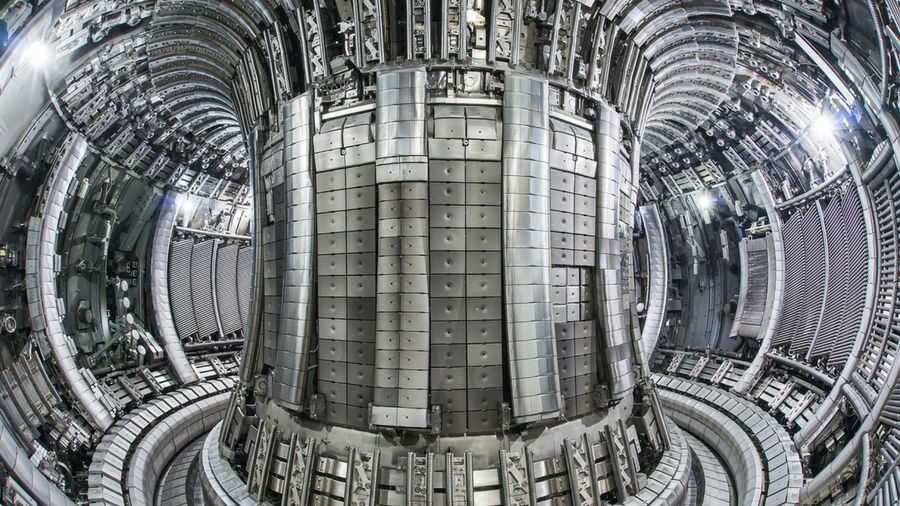


When a neutron escapes the reactor and hits a lithium-6 molecule, it should produce tritium, which can then be extracted and fed back into the reaction. Breeder technology aims to work by surrounding the fusion reactor with a “blanket” of lithium-6. Scientists have known about this potential stumbling block for decades, and they developed a neat way around it: a plan to use nuclear fusion reactors to “breed” tritium, so that they end up replenishing their own fuel at the same time as they burn it. “We’re hitting the peak of this tritium window roughly now.” “If ITER had been doing deuterium-tritium plasma like we planned about three years ago, everything kind of would have worked out fine,” says Scott Willms, fuel cycle division leader at ITER. We’re in that sweet spot right now, but ITER-running almost a decade behind schedule-isn’t ready to take advantage of it. advanced reactor industry over the next several years.ĭOE previously invested more than $30 million through two separate cost-shared agreements to further develop the Xe-100 design and demonstrate a production process for its TRISO fuel.In 1999, Paul Rutherford, a researcher at Princeton’s Plasma Physics Laboratory, published a paper predicting this problem and describing the “ tritium window”-a sweet spot where tritium supplies would peak before declining as heavy-water-moderated reactors were switched off. Since the TRISO uranium particle is the basis for multiple advanced reactor fuel designs, the TRISO-X Facility could become a key enabler for deployment of the U.S. The company plans to complete the TRISO-X Facility construction by the mid-2020s.
#Fusion reactor meltdown license
company actively producing TRISO fuel today and was awarded additional DOE assistance to design a commercial scale “TRISO-X” fuel fabrication facility and submit a Nuclear Regulatory Commission license application for the facility by mid-2021. The company is on target to have its basic design completed by 2021 and has successfully fabricated its first fuel pebbles using natural uranium at a pilot scale fuel facility, on-site at the Oak Ridge National Laboratory. Department of Energy's Advanced Reactor Demonstration Program. X-energy was awarded $80 million in initial funding to demonstrate a four-unit, 320 MWe plant within the next seven years through the U.S. Factory-produced major components, enabling improved quality control while reducing per unit costs.Reduced construction time (2.5 – 4 years for a 300 MWe plant).Continuous fueling and on-site fuel storage, delivering high availability (93-95%) while ensuring plant resiliency.Ability to load follow (from 100% to 40% power within 20 minutes), making the plant complementary to maintaining a stable load on a grid that includes renewables.This reactor concept can also be designed to incorporate passive cooling through natural conduction, thermal radiation and convection in the case of a loss of helium coolant-meaning it doesn’t have to rely on large local water sources, pumps, or safety systems to prevent fuel damage. The spent fuel is then placed directly into dry casks and stored on-site-without the need for interim or active cooling.
#Fusion reactor meltdown full
Each pebble remains in the core for a little more than three years and are circulated through the core up to six times to achieve full burnup. The reactor continuously refuels by adding fresh pebbles daily in at the top, as older ones are discharged from the bottom of the core.

#Fusion reactor meltdown generator
The fresh pebbles are loaded in the reactor like a gumball machine and helium is pumped down through the pebble bed to extract the heat into a steam generator that produces electricity. This helps retain fission products and gases that are produced during operations and would allow the plant to be constructed within 500 meters of factories or urban areas. The TRISO coating creates an airtight seal around the uranium kernel. Each pebble (roughly the size of a billiard ball) contains thousands of specially coated Tristructural Isotropic (TRISO) uranium fuel particles that are virtually indestructible. The reactor core is made of graphite and filled with 15.5% enriched fuel pebbles. The Xe-100 is an advanced modular reactor with each unit designed to produce around 76 megawatts of electric power.


 0 kommentar(er)
0 kommentar(er)
